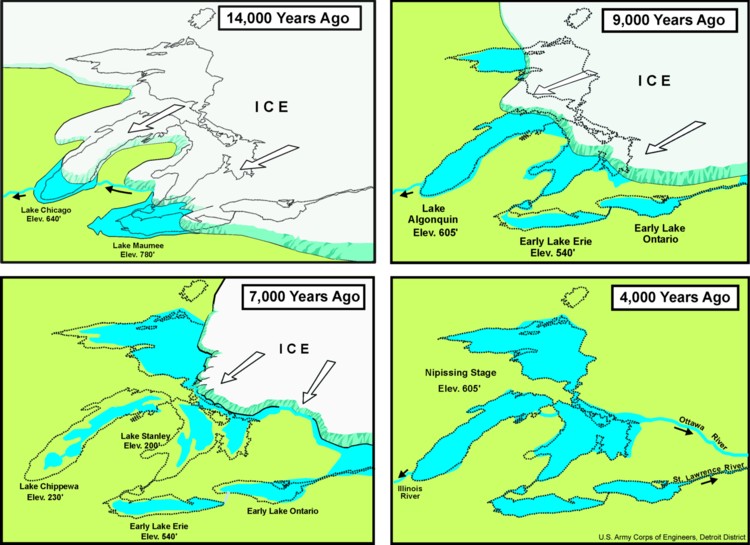Air pollution and climate change have three commonalities. They:
- Affect or alter lives
- Make matters worse
- Need atmosphere to survive
Affect or alter lives
This is not something that takes serious contemplation to get one’s head around. In other words, this is not some obscure notion or idea we are talking about here. And, to be clear, this is not the climate change that has come about via anthropogenic influence (read: “the burning of fossil fuels by humans) that is hereafter being referred to. Rather, this climate change is of the variety that has been part of the atmospheric/Earth system since day one.
So, what are the ways in which air pollution and climate change have affected or altered life?
Whether we’re talking about prolonged periods of drought, mini ice ages or whatever, climate change and air pollution are forces to be reckoned with. Both can and do wreak havoc and inflict pain and suffering.

Air pollution is a disrupter in how it affects people’s lives. Depending on concentration, amount, type and the duration of exposure to, air pollution can create all manner of health problems in people. From the beginning of the Industrial Revolution in 1750, polluted air, by and large, was not the focus of most people’s attention. However, during the 1930s, the ’40s and ’50s with thousands of lives lost brought on by exposure to deadly fumes and smoke or soot in places like Meuse Valley, Belgium, Donora, Pennsylvania and London, England to name but three, these are among such events which really opened people’s eyes of the dangers posed by air toxics. The presence of atmospheric inversions in those communities affected is what gave rise to the so-called “killer smogs.”
Meanwhile, the deserts and poles are two of Earth’s most inhospitable places. Related to climate change, just recently, in fact, in Death Valley (Hint: it is not too hard to imagine why Death Valley was given this name) on an afternoon at either 3:27 p.m. or 3:47 p.m. (something like that) air temperature reached 130 degrees Fahrenheit, purportedly, the highest ever in recorded history. Extreme high temperatures and hot climates are not uncommon conditions in desert regions. While at the poles the opposite is true: Depending on the time of the year in each, the air at times can be downright extremity-numbing.
And speaking of cold and ice ages, the last one, incidentally, lasted some 10,000 years. What we know for a fact is that life existed during this time and required that people had to adjust or they would not have survived. Warm climate or cold, it’s all about humans’ ability to adapt or adjust that enables our survival in such extreme conditions and trying times.
Make matters worse
Common to air pollution and climate change also is that they can worsen an already bad situation.
Okay, so let’s talk asthma and diseases of the lung. Air pollution can be foundational in leading to respiratory ailments. COVID-19 is a perfect example.
Through evidence from a scientific study it has been determined that people who become infected, if they live in an area with high air pollution concentrations, the health issues they do have can be exacerbated. It’s the same thing for people with asthma. When pollution levels are high this may be enough to send some asthmatics to hospital emergency departments.
From “‘Our air isn’t killing us,’ one writer argues. Oh yeah. According to whom?” here is an excerpt.
“‘…Dr. Kari Nadeau, a Stanford University medical school professor with expertise in the areas of allergies and asthma, a few years ago discovered that ‘many of her child asthma patients had abnormally low levels of regulatory T-cells, which are crucial to maintaining a healthy immune system’ …”
“‘Quite interestingly and importantly, of Dr. Nadeau’s patients, those studied from Fresno, California, not surprisingly, had the greatest regulatory T-cell-function impairment …”
“‘Studied as well were Fresno non-asthmatic children. Most astonishingly, perhaps, was that the non-asthmatic Fresno children studied showed lower regulatory T-cell levels than did the children studied who were from Palo Alto who had asthma …’” Yes, quite an interesting and important revelation.
Not climate change per se but a branch, in this case global warming in general and heat waves in particular, these can leave lasting impacts and cause some real destruction.
In California’s San Joaquin Valley and due to the effects of drought over several years, some growers were forced to fallow their fields, attributed to diminishing water supplies.
In fact, in Porterville a south Valley town, there were groundwater supplies there that ran completely dry. To compensate, bottled water was brought in by the truckloads. Because water is a shared resource, the situation might have been that aquifers in one area were overdrawn leading to aquifer depletion.
In bringing in water by the truckloads to those impacted in the Porterville community, such has added to the area’s air pollution burden.
Furthermore, in Alaska, indigenous peoples are being put to the test due to climate change’s effects.
Need atmosphere to survive
Given that both climate and pollution in air need the support system of the atmosphere to exist, neither can occur without it. That goes without saying. However, if our air is being compromised, breathing becomes more difficult and quality of life suffers as a consequence.
Then again, on the plus side …
At least one of these two phenomena can be adjusted or altered or manipulated or modified for the better.
Image above: U.S. Army Corps of Engineers
This post was last revised on Dec. 22, 2020 @ 7:48 a.m. Pacific Standard Time.
Published by Alan Kandel